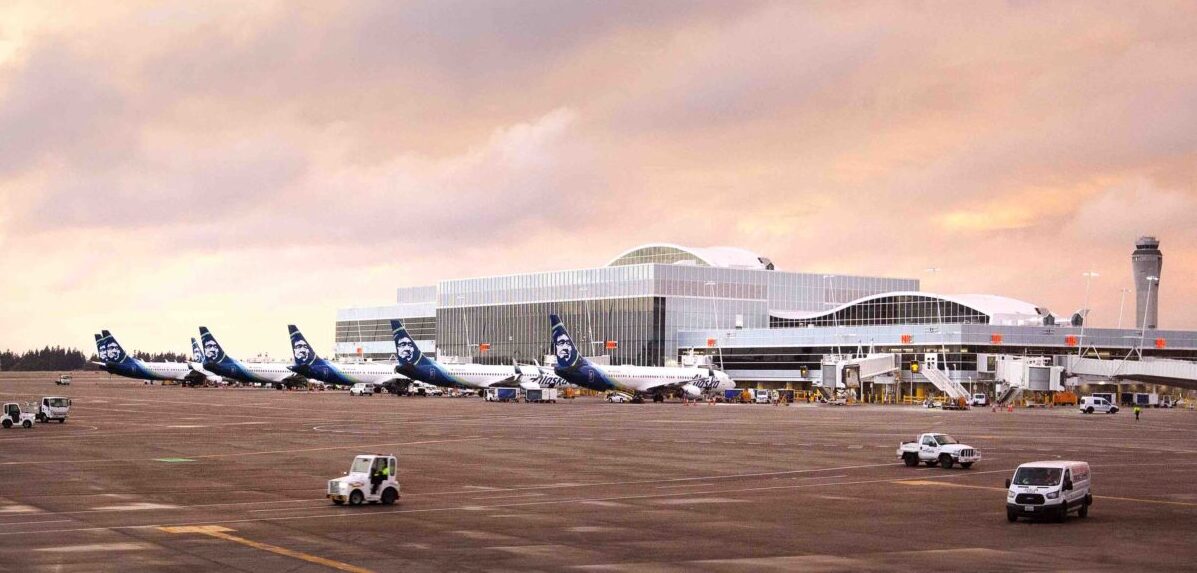Check out what is clicking on FoxBusiness.com.
A record-breaking heat wave subsided for coastal cities in the Pacific Northwest, but increased their influence inland, threatening people, crops and wildlife.
After several days above 100 degrees, temperatures hit 84 in Seattle and 93 in Portland, Oregon on Tuesday as changing winds drew cooler air from the Pacific Ocean. Both cities hit record highs on Monday, with Seattle hitting 108 and Portland 116.
Here in Yakima, the center of a rich fruit growing region in central Washington, the maximum temperatures reached a record 113 degrees on Tuesday.
The National Weather Service continued to warn of dangerous heat in the northwest, with record breaking temperatures inside the region for much of the week. The heat dome covering the region has also brought the highest temperatures ever seen in Canada, with the city of Lytton, British Columbia reaching nearly 118 degrees on Tuesday, a third national record in as many days.
WHAT IS A THERMAL MEDOMA? THE PACIFIC NORTHWEST IS SOLD BY ITS EFFECT
The chief medical examiner in British Columbia said the number of deaths recorded in Canada’s westernmost province in the four days leading up to Monday afternoon – coinciding with the start of the heat wave – was almost double the average for a comparable 96-hour Period. The coroner said the 233 deaths recorded during the reporting period could increase as new data arrived, and investigators would determine if heat played a role in the increase.
Avista Utilities announced that it was planning one-hour recurring power outages on Tuesday due to extremely high energy demands for some Spokane, Wash. Customers, after unplanned power outages affected thousands of customers on Monday. The utility asked customers to save as much energy as possible. The maximum temperature in Spokane on Tuesday was a record 109.
The city of Yakima has set up two cooling centers by July 1, which will be available to residents if the excessive heat warning is expected to lift, the city said.
In the meantime, fruit growers and wildlife officials had to work to save crops and fish.
RECORD TEMPERATURES IN THE NORTHWEST ASSOCIATED WITH AT LEAST 2 DEADS IN WASHINGTON
“We will be on uncharted territory for this type of heatwave for this length of time,” said James Michael, vice president of marketing for Northwest Cherry Growers, a government promotion agency. “The boys will do whatever they can to save most of their crops.”
Farm workers at Matson Fruit Co., just outside of Yakima, got off to an early start Tuesday morning. The crews drove into the orchards at 5 a.m. to be ready by 10 a.m. – several hours ahead of their usual schedule – in hopes of braving the heat.
At 10 o’clock in the morning the road that surrounded the apple, cherry and pear orchards was open 90 degrees, but a short walk into the orchards revealed the real dangers: the blazing sun over them; just a rare breeze through the lush trees with bright red cherries, three weeks before harvest; and an oppressive moisture trapped underfoot by the thick foliage and grass. Sweat dripped on even those who stood still, and only breathing was an effort.
“As a farmer, we always struggle with the weather,” said Jordan Matson, manager of Matson Fruit. But the timing and duration of this heat wave, he said, “is new.”
Two people jump off a footbridge in Lake Union Park during a heat wave that hits the Pacific Northwest in Seattle on Sunday, June 27, 2021. A record high was set for the day the day before, and more record highs are expected for today
GET FOX BUSINESS ON THE GO BY CLICKING HERE
Rosa Balbuena, a site manager who leads a group of 23 workers thinning apple trees, said her team is well aware of the extraordinary danger of high temperatures – and the symptoms of heat-related illness – but they got through the morning without injuries.
At 10 a.m., the only workers left in the orchards were four men overseeing the irrigation lines – an important piece of infrastructure in this heat and prone to clogging. At the edge of a stand with Honeycrisp apples, farm worker Mario Barrera pulled a filter from the chest-high pipe of the irrigation line and flushed mud and dirt into the still flowing water. His soaking long sleeves would have given him some relief from the heat, he said, as did traveling between the orchards in an open SUV. Usually he wore full rain gear to protect himself from the discomfort of constant wetness. It felt good today, he said.
Back at the Matson family’s packaging factory in town, workers filled plastic bags with apples that had been refrigerated since the fall for retailers like Kroger, Sam’s Club and Walmart. The facility is being cooled by some sort of sump cooler, said Mr. Matson, who runs the packaging side of the family business. Here they closely monitored the indoor temperatures: after the cooling system struggled to keep the indoor temperatures at 90 degrees, they planned to shut down for the day.
Meanwhile, federal and state agencies were working to protect the critically endangered Snake River sockeye salmon, which makes an 800-mile journey to spawn each year. The U.S. Army Corps of Engineers has drained water from Idaho’s Dworshak Dam to cool river temperatures downstream of the Snake River. When river temperatures reach 68 degrees, the salmon become susceptible to disease, predators, and death, said Michael Milstein, of the National Marine Fisheries Service.
“We’re tapping into that earlier in the year than we normally would like,” said Milstein, “but there isn’t much choice now because of the extreme temperatures.”
CLICK HERE TO READ MORE ABOUT FOX BUSINESS
Location data collected from tagged fish suggests sockeye salmon could reach the Lower Granite Dam in Washington state within a week, Milstein said. When they do, Idaho Fish and Game officials are ready to collect fish at the dam, load them into trucks, and drive them the rest of the way to their spawning areas in central Idaho. They’ll make the call later if the water temperatures are still dangerously high, he said.
“Nobody likes to put salmon in trucks,” said Milstein, “but if the alternative is essentially to watch them die, it’s just a lot safer.” In some years only a few hundred of these critically endangered species travel, so “we want to give each of them the best possible chance”.
click here to read more The Wall Street Journal.







:quality(70)/cloudfront-us-east-1.images.arcpublishing.com/cmg/BPEI2QQ76SHPPOW6X6A6WHEGX4.jpg)
















:quality(70)/cloudfront-us-east-1.images.arcpublishing.com/cmg/GLQND2AXQQO2G4O6Q7SICYRJ4A.jpg)




